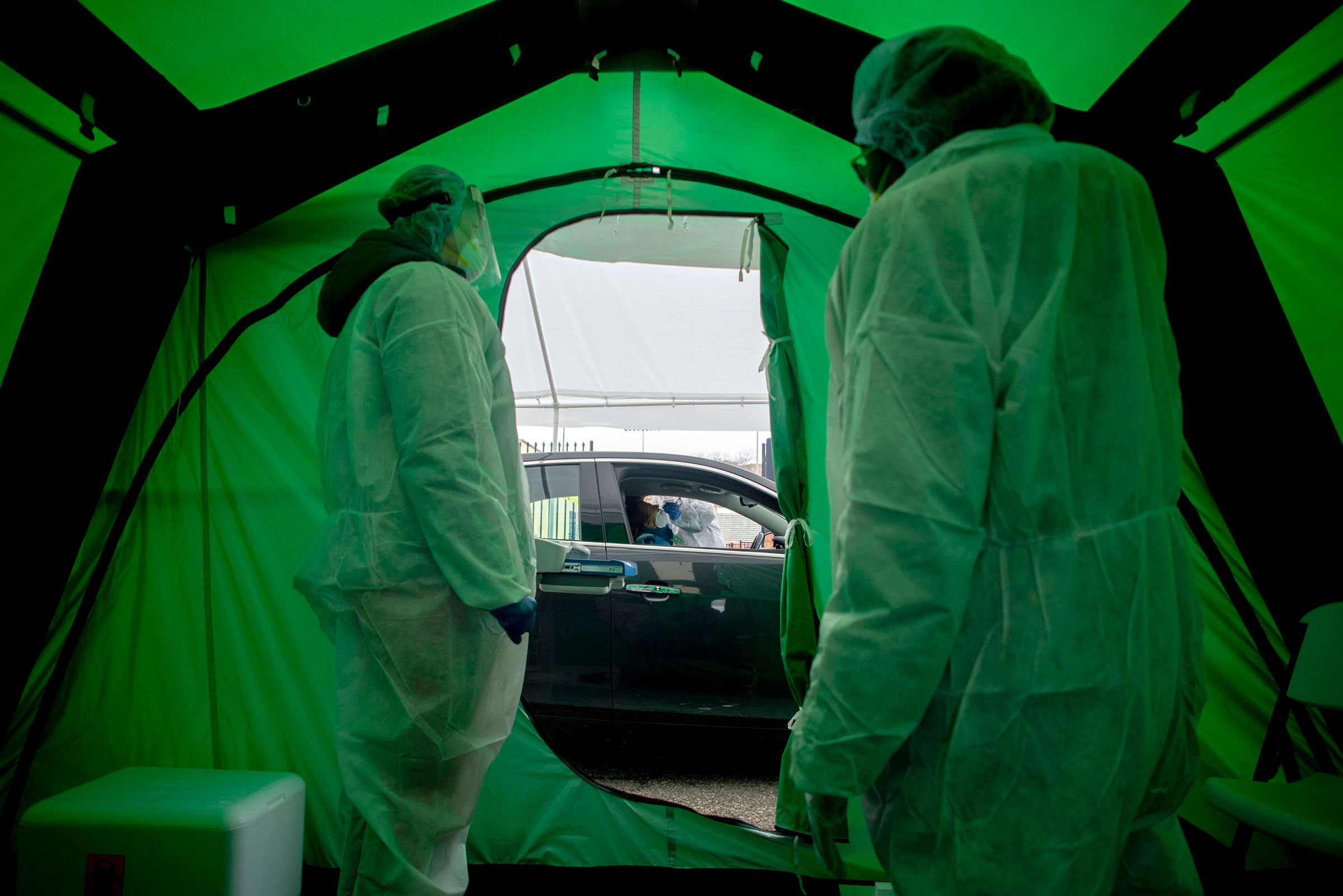
COVID-19 is dividing the country in many dangerous – even deadly – ways and now, those divisions threaten to further stall urgently needed action. At a time when science and data must drive policy – and we have seen that such policy works – too many are instead dismissing facts and evidence to advance shortsighted goals. Americans are eager to get back to work, but only when we can do so safely, responsibly, and with the hopes of not having to shut down again.
The public debate at the moment is between those calling for ubiquitous testing (and I’m among them) and those saying we can’t do it or don’t need to. Adding to this disagreement, there is now debate about whether we should be testing for COVID-19 at all, and instead test for antibodies that might reveal immunity to the disease. At a time when urgent, widespread action is necessary, these divisions are becoming a roadblock. I’m reminded of the image of protesters screaming from their cars at health care workers silently preventing them from moving forward. No one advances.
The fact is, we need ubiquitous testing because we need to know who is actively infected and a danger to others and who is not currently infected. Testing for active infectious disease is a bedrock of controlling that disease, borne out of years of evidence and experience. There is no questions about whether we should do this and there should not be any question about whether we can do it. We must. And while “we need more testing” may seem a tired verse, we still are not testing for the virus at the levels we need. PCR tests – which look for the presence of the virus – have topped out at about 150,000 per day nationally. This is simply not enough to yield an accurate and actionable picture of the epidemic and at this moment, we are surely missing a majority of the people who are actively infected and spreading to others. Our analysis suggests that we need a minimum, 500,000 per day, and that assumes we maintain social distancing for a bit to bring case numbers down further.
Antibody tests, which are receiving a lot of attention, aren’t an alternative to the PCR test that looks for virus. They are a complement – we need both. These antibody tests are essential for getting an overall picture of the epidemic, how many have had silent infections, and whether people might be immune. While these tests are great at the population level, there is too much error at the individual level. Given high rates of false positives and false negatives population we currently see as this technology is still being developed, it would be risky to tell people that they are immune when they may not be. Still, they are helpful when applied more broadly to a community or state and we should add them to our arsenal, but not be distracted from the challenge of tracking the virus as it moves.
Without ubiquitous testing—testing everyone with symptoms, and those they have come in contact with—we simply cannot be confident that a reported decline in cases represents a true decline in infections – and that it’s safe to open. If a state misjudges its true underlying infection trajectory, it may suffer large flare-ups of the disease, necessitating a long and painful lockdown again. Yet most states are long way from adequate testing – and the tracing of contacts that must follow. Massachusetts was the first state to begin building the infrastructure to trace contacts and it is still far from being ready. Other states have begun this effort but have ways to go to be ready. One report estimates the U.S. will need 100,000 new workers to perform this task.
The President has been encouraging the protests and that adds pressure on the Governors to open, even when those states don’t meet the criteria his task force set out for opening up. It would be helpful if the President listened more closely to the public health and science advisors on his team and let their advice shape his message to states. The facts and the data are clear, we cannot re-open without a far more robust picture of who is infected and who is not. We should not ask anyone to return to a workplace without knowing if their coworkers are healthy. We cannot go back to a dinner out, without knowing if the waiter or waitress is healthy. Or get on a beach or a boat without knowing the people around us are not shedding virus asymptomatically.
The divisions around testing are now blocking needed and urgent action. These divisions must be repaired. The scientists and public health experts agree on what’s needed, it’s time our national policy reflect the best science and evidence and policy leaders should bring us together to safely re-open based on that guidance.
The bottom line is that we can open up America again, but it can’t be back to business as usual. That will be difficult. We must open up slowly and deliberately with ubiquitous testing, contact tracing, and isolating those who are sick. And of course, no large gatherings. It won’t be back to business as usual. But not getting back to business as usual is better than not getting back to business at all. And those really are our only choices.
More Must-Reads from TIME
- How Donald Trump Won
- The Best Inventions of 2024
- Why Sleep Is the Key to Living Longer
- Robert Zemeckis Just Wants to Move You
- How to Break 8 Toxic Communication Habits
- Nicola Coughlan Bet on Herself—And Won
- Why Vinegar Is So Good for You
- Meet TIME's Newest Class of Next Generation Leaders
Contact us at letters@time.com